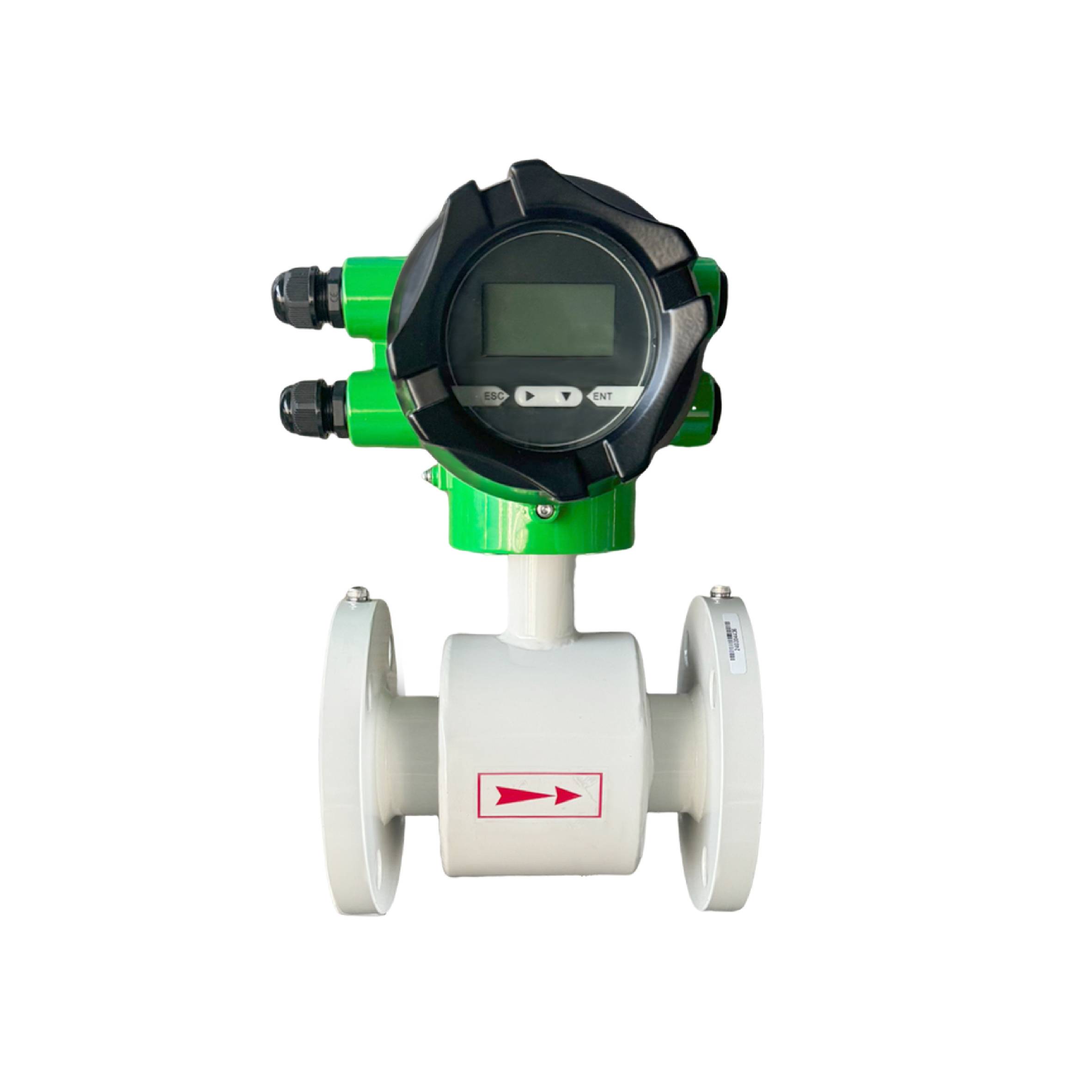In the complex processes of industrial production, electromagnetic flowmeters, as key instruments for accurately measuring fluid flow, are widely used in many fields such as chemical industry, power generation, and metallurgy. However, during actual operation, the problem of measurement fluctuations often occurs, seriously affecting the stability of the production process and product quality, and becoming a tough issue faced by numerous enterprises.
I. In - depth Analysis of the Causes of Measurement Fluctuations
(I) Fluctuations Caused by Fluid Characteristics
Unstable Medium Conductivity: Electromagnetic flowmeters operate based on Faraday's law of electromagnetic induction, requiring the measured fluid to have a certain and relatively stable conductivity. In chemical production, the composition of the fluid may change during some reaction processes, leading to fluctuations in conductivity. For example, in some fluids after acid - base neutralization reactions, as the degree of reaction varies, the ion concentration changes, and the conductivity fluctuates significantly, thus causing fluctuations in the measurement signals of the electromagnetic flowmeter.
Presence of Impurities or Bubbles in the Fluid: When there are solid impurities or bubbles in the fluid, measurement fluctuations are likely to occur. Solid impurities may scratch the electrodes, interfering with the electrical signal transmission between the electrodes and the fluid; while the presence of bubbles changes the effective conductive cross - section of the fluid, resulting in unstable measurement signals. In sewage treatment plants, sewage often contains impurities such as sediment and plastic particles, as well as a large number of bubbles generated during the aeration process. These will cause the measurement data of the electromagnetic flowmeter to fluctuate frequently, making it difficult to accurately reflect the actual flow rate.

(II) Fluctuations Caused by Installation and Environmental Factors
Improper Installation Location: The installation location of the electromagnetic flowmeter has a significant impact on measurement accuracy. If it is installed near pumps, valves, or elbows, the fluid will generate turbulence at these parts, and the velocity distribution will be uneven, leading to measurement fluctuations. In an oil pipeline, if the electromagnetic flowmeter is too close to the pump outlet, the pressure pulsation and fluid disturbances generated by the pump operation will be directly transmitted to the flowmeter, causing significant fluctuations in the measurement data and unable to provide reliable basis for production scheduling.
Impact of Electromagnetic Interference: There are a large number of electromagnetic interference sources in the industrial environment, such as large - scale motors and transformers. When the electromagnetic flowmeter is in a strong electromagnetic interference environment, the external electromagnetic field will be coupled into the measurement circuit, interfering with the measurement signal. In large - scale industrial sites such as steel plants, numerous high - power electrical equipment operate simultaneously, generating strong electromagnetic interference that can cause irregular fluctuations in the measured values of the electromagnetic flowmeter, and in severe cases, even make the instrument unable to work properly.
(III) Fluctuations Caused by Instrument Malfunctions
Electrode Malfunctions: After long - term use, the electrodes of the electromagnetic flowmeter may experience wear, corrosion, or scaling. Electrode wear will change the electrochemical characteristics of its surface, corrosion may lead to poor contact between the electrode and the fluid, and scaling will hinder the normal transmission of electrical signals. When measuring corrosive chemical media, the corrosion rate of the electrodes accelerates, resulting in unstable measurement signals and fluctuations.
Converter Malfunctions: The converter is responsible for amplifying, processing, and converting the weak electrical signals detected by the sensor. If the performance of the internal electronic components of the converter deteriorates or malfunctions, such as unstable amplifier gain or reduced accuracy of the analog - to - digital converter, it will directly affect the stability of the measurement results, causing fluctuations in the measured flow values.
II. Effective Strategies for Solving Measurement Fluctuations
(I) Optimization Measures for Fluid Characteristics
Stabilize the Medium Conductivity: During the industrial production process, for fluids with easily fluctuating conductivity, the conductivity can be monitored online, and automatic means such as adding electrolytes or other adjustment methods can be used to keep the fluid conductivity within the applicable range of the electromagnetic flowmeter and relatively stable. For some production processes with extremely high requirements for conductivity, a special conductivity adjustment device can be considered to be installed before the fluid enters the electromagnetic flowmeter to ensure the accuracy of measurement.
Pre - treat the Fluid: To reduce the impact of impurities and bubbles on measurement, install a filter in front of the electromagnetic flowmeter, and select an appropriate filtration accuracy according to the characteristics of the impurities in the fluid to effectively remove solid impurities. For fluids containing bubbles, set up a special degassing device, such as using a gas - liquid separator or installing an exhaust valve at the high point of the pipeline to timely discharge the bubbles, ensuring that the fluid entering the electromagnetic flowmeter is pure and reducing measurement fluctuations.
(II) Optimize Installation and Eliminate Interference
Reasonably Select the Installation Location: Strictly follow the installation requirements of the electromagnetic flowmeter, and select a straight pipeline section away from pumps, valves, and elbows for installation. Generally, the length of the upstream straight - pipe section should be not less than 5 - 10 times the pipe diameter, and the length of the downstream straight - pipe section should be not less than 3 - 5 times the pipe diameter. Before installation, conduct a detailed planning and design of the pipeline system to ensure that the installation location meets the requirements. At the same time, a flow straightener can be installed before and after the electromagnetic flowmeter to improve the velocity distribution of the fluid and further improve the measurement stability.
Shield Electromagnetic Interference: Take effective electromagnetic shielding measures for the electromagnetic flowmeter, such as installing the instrument in a metal housing with good electromagnetic shielding performance and ensuring good grounding of the housing. Use shielded cables to connect the sensor and the converter to reduce the impact of external electromagnetic interference on the measurement signal. For places with strong electromagnetic interference sources around, an electromagnetic shielding room or shield can be used to provide additional protection for the electromagnetic flowmeter to ensure that it works in a stable electromagnetic environment.
(III) Strengthen Instrument Maintenance and Fault Troubleshooting
Regularly Check the Electrodes: Establish a system for regularly checking the electrodes. Determine a reasonable inspection cycle according to the actual usage situation and fluid characteristics. Generally, for fluids with strong corrosivity, the electrodes should be checked at least once a month; for ordinary fluids, they can be checked once a quarter. During the inspection, observe whether there is wear, corrosion, or scaling on the surface of the electrodes. If problems are found, deal with them in a timely manner. For electrodes with severe wear or corrosion, replace them with new electrodes of the same model in a timely manner and ensure correct installation.
Detect and Maintain the Converter: Regularly detect the performance of the converter, and use professional detection equipment to check the working status of the internal electronic components. A comprehensive detection of the converter can be carried out once a year, including calibration of key parameters such as amplifier gain and analog - to - digital converter accuracy. If the performance of the electronic components deteriorates or malfunctions, replace the corresponding components in a timely manner and re - debug and calibrate the converter to ensure its normal operation and stable output of measurement signals.


